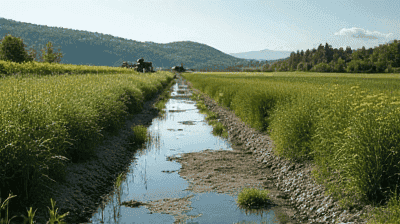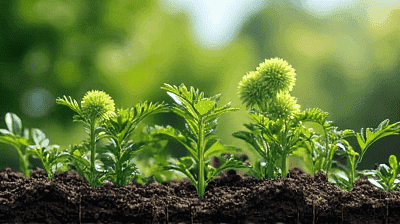
As the world faces increasing challenges related to pollution and environmental degradation, the need for effective waste management strategies has never been more critical. Hazardous waste, generated from various industrial processes, agricultural activities, and urban development, poses significant risks to human health and ecosystems. Traditional methods of waste disposal, such as incineration and landfilling, can be costly, harmful, and insufficient in addressing the complexities of hazardous waste. In response to these challenges, bioremediation has emerged as a promising natural solution for breaking down and detoxifying hazardous waste.
Bioremediation harnesses the power of living organisms, primarily microorganisms and plants, to degrade or transform harmful substances into less toxic or non-toxic compounds. This process not only highlights the potential of nature to heal itself but also offers sustainable alternatives for waste management.
Bioremediation refers to the use of biological organisms, such as bacteria, fungi, and plants, to break down or remove contaminants from the environment. This process can occur naturally or be enhanced through human intervention to accelerate the degradation of hazardous substances. By employing these natural mechanisms, bioremediation aims to restore contaminated sites and reduce environmental risks associated with hazardous waste.
Bioremediation can be broadly categorized into two main types:
In Situ Bioremediation: This method involves treating contaminants directly at the site of pollution without the need for excavation or removal. It often relies on the natural processes of microorganisms present in the contaminated environment.
Ex Situ Bioremediation: In this approach, contaminated material is removed from the site and treated elsewhere. This may include biological treatment processes such as composting, landfarming, or biopiling, allowing for controlled conditions that enhance degradation.
Bioremediation relies on various biological mechanisms to break down hazardous waste, including:

Contaminated sites, whether due to industrial activities, oil spills, or agricultural runoff, pose significant risks to public health and the environment. Bioremediation offers a viable solution by restoring these areas through natural processes. Some notable benefits include:
Compared to traditional remediation methods, bioremediation often presents a more economical approach to hazardous waste management. This is due to:
Bioremediation aligns with the principles of sustainability by utilizing natural processes powered by living organisms to manage hazardous waste. Some key aspects include:
Bioremediation has been successfully applied across various sectors for the treatment of hazardous waste. Below are some prominent applications:
Oil spills can have devastating effects on marine ecosystems and coastal environments. Bioremediation techniques are often employed to mitigate these impacts through:
Heavy metals, such as lead, cadmium, and mercury, present significant challenges in waste management. Bioremediation strategies include:
Agricultural practices often lead to soil and water contamination by pesticides and herbicides. Bioremediation methods can include:
Landfills can produce leachate, a hazardous liquid that leaches through waste, carrying pollutants into the surrounding environment. Bioremediation approaches include:
Bioremediation is also applicable in treating polluted groundwater sources. Techniques include:

One of the most infamous oil spill disasters occurred in 1989 when the Exxon Valdez tanker struck a reef, releasing millions of gallons of crude oil into Prince William Sound, Alaska. Bioremediation played a critical role in the recovery efforts.
Strategies Used:
Outcome: Studies indicated that areas subjected to bioremediation showed accelerated recovery rates compared to untreated regions, highlighting the effectiveness of bioremediation in restoring polluted environments.
Sediment contamination due to heavy metals is a widespread issue in industrial regions. A successful case involved the use of plants to remediate sediments contaminated with cadmium and lead in a river near an industrial area.
Strategies Used:
Outcome: The implementation of phytoremediation led to improved sediment quality and environmental conditions in the affected river.
In several agricultural regions where pesticides contaminated soils, bioremediation strategies showcased success in returning soils to health.
Strategies Used:
Outcome: Field studies demonstrated substantially reduced pesticide residues in treated soils, allowing for the restoration of agricultural productivity and food safety.
Despite its potential, bioremediation faces several challenges that must be addressed for more widespread application:
The effectiveness of bioremediation can be influenced by environmental factors such as pH, temperature, and availability of nutrients. Each of these factors can affect microbial activity, leading to variability in degradation rates.
Some hazardous wastes contain complex mixtures of chemicals or highly toxic compounds, which may be resistant to biological degradation. Identifying suitable microorganisms or plants capable of breaking down such contaminants can be challenging.
Bioremediation is often a slower process compared to traditional methods of waste management. Depending on the nature of the contamination and the specific bioremediation technique used, achieving desired results may take weeks, months, or even years.
There may be skepticism surrounding the effectiveness of bioremediation, especially when compared to more immediate and aggressive remedial methods. Increased public education and awareness are essential for fostering acceptance of bioremediation as a viable solution.

As environmental challenges continue to grow, the demand for sustainable waste management solutions is becoming increasingly urgent. Bioremediation presents unique opportunities for innovation and advancement in the following ways:
Ongoing research into microbial genetics, plant biology, and environmental science holds promise for enhancing the effectiveness of bioremediation. Key areas of focus include:
Government policies that encourage research funding and promote bioremediation techniques can drive innovation in the field. By integrating bioremediation into environmental regulations and remediation strategies, policymakers can facilitate wider application.
Community involvement can play a vital role in the implementation of bioremediation projects. Educating local populations about bioremediation can increase public support, participation, and funding for remediation efforts.
Advancements in technology can complement bioremediation efforts. For example:
Bioremediation is a powerful tool in the struggle against hazardous waste, offering innovative and sustainable solutions for restoring contaminated environments. By harnessing the natural capacities of microorganisms and plants, bioremediation has proven effective in detoxifying hazardous substances, managing contaminated sites, and supporting ecological recovery.
Despite facing challenges related to environmental conditions, complexity of contaminants, and public perception, there is considerable potential for further advancements in bioremediation. Through ongoing research, policy support, community engagement, and technological integration, bioremediation can play an increasingly vital role in achieving sustainable waste management practices.
As we work towards a cleaner, healthier planet, embracing the principles of bioremediation may well be one of our best defenses against the growing challenges posed by hazardous waste. Together, we can support the natural processes that contribute to a balanced ecosystem while ensuring safety and sustainability for future generations.